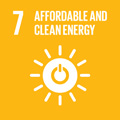- Docente: Matteo Calvaresi
- Credits: 6
- SSD: CHIM/06
- Language: Italian
- Teaching Mode: Traditional lectures
- Campus: Bologna
- Corso: Second cycle degree programme (LM) in Chemistry (cod. 6752)
Learning outcomes
At the end of the class the student will be able of using the most common tools of physical organic chemistry (transition state theory, chemical kinetics, free energy relationships, isotopic effects…) and theoretical organic chemistry (frontier orbital theory, Woodward-Hoffmann theory, valence-bond theory) to understand the mechanism of organic reactions.
Course contents
The course comprises 5 CFU of lectures (40 hours) and 1 CFU of exercises (12 hours).
Reaction Mechanism. Experimental methodologies used for the determination of reaction mechanisms. Born-Oppenheimer approximation. Potential energy surface (PES). Mathematical description of a PES for structural and reactivity problems in organic chemistry. How to represent a PES: cross sections, More O'Ferrall diagrams. Principles of chemical kinetics. Arrhenius equation. Transition state theory. Uses of isotopic labeling for determination of reaction mechanisms. Isotope effects. Primary isotope effect. Secondary isotope effect. Isotope labelling. Substituent Effects. Free energy relationships. Hammett equation and plots. Two parameters equation. Perturbation methods in organic chemistry: the PMO (Perturbation Molecular Orbital) method. Klopman - Salem equation. HSAB theory in organic chemistry: understanding HSAB theory using the PMO approach. Application of PMO theory to organic reactivity: the FMO ((Frontier Molecular Orbital) approximation. Substitution nucleophilic reactions at the sp3 carbon, electrophilic aromatic substitution and Diels-Alder. Pericyclic reactions (cycloaddition, electrocyclic, sigmatropic, chelotropic reactions): basic notions. Woodward-Hoffmann rules for electrocyclic and cycloaddition reactions. FMO theory for electrocyclic, cycloaddition, sigmatropic and chelotropic reactions. A detailed comparison between theory and experiments for model reactions.
Readings/Bibliography
The basic reading material will be the teachers' slides and notes; this material will be available on-line.
For further information, the following bibliography is suggested:
•MODERN PHYSICAL ORGANIC CHEMISTRY - ANSLYN ERIC V.; DOUGHERTY DENNIS A.
•ELEMENTI DI CHIMICA ORGANICA FISICA – GIORGIO MOLTENI
Teaching methods
Lectures. Problem solving in the classroom
Assessment methods
The goal of the oral examination can be summarized as
follows:
(i) the student must possess a good knowledge of the main tools
(experimental and theoretical) that allow to understand the
topology of a reaction surface.
(ii) the student must be able to use the above concepts to discuss
simple examples of organic reactivity.
Failing grade: there are significant gaps in content; formative deficiencies in basic knowledge in the field of chemistry, inappropriate language, and lack of orientation within the topics covered in the course.
18–22: language barely appropriate, poor argumentative skills, and minimal knowledge of the exam topics.
23–27: good memorization-based knowledge of the subject and fair ability to synthesize and articulate analysis, with correct technical language.
28–30: in addition to solid competencies, the student must demonstrate the ability to elaborate; a clear and comprehensive overview of the topics is required, along with strong argumentative skills, broad mastery of competencies and specific technical language, and the ability to solve complex exercises. Honors (“cum laude”) is awarded when the overall performance is clearly above average.
The student may refuse a passing grade only once.
Students with learning disorders and\or temporary or permanent disabilities: please, contact the office responsible (https://site.unibo.it/studenti-con-disabilita-e-dsa/en/for-students ) as soon as possible so that they can propose acceptable adjustments. The request for adaptation must be submitted in advance (15 days before the exam date) to the lecturer, who will assess the appropriateness of the adjustments, taking into account the teaching objectives.
Teaching tools
The lessons are presented to students with the aid of blackboard and multimedia supports. The slides are available for the students through the course web page of the Bologna University (Virtuale).
Problem solution in the classroom and discussion of examples from the literature.
Office hours
See the website of Matteo Calvaresi
SDGs


This teaching activity contributes to the achievement of the Sustainable Development Goals of the UN 2030 Agenda.
